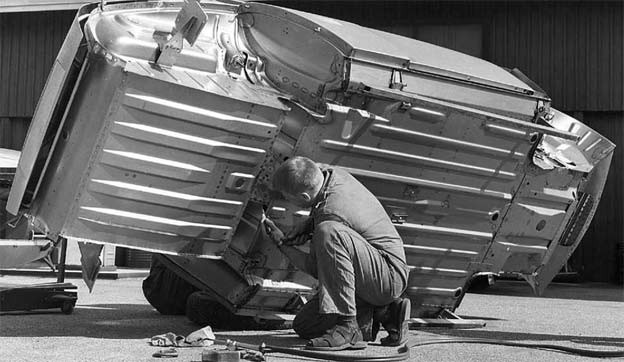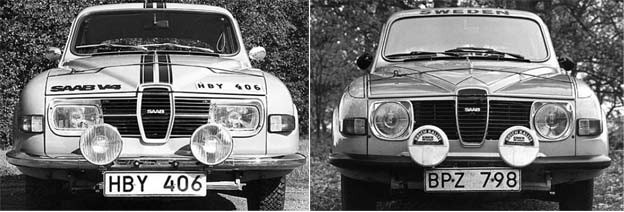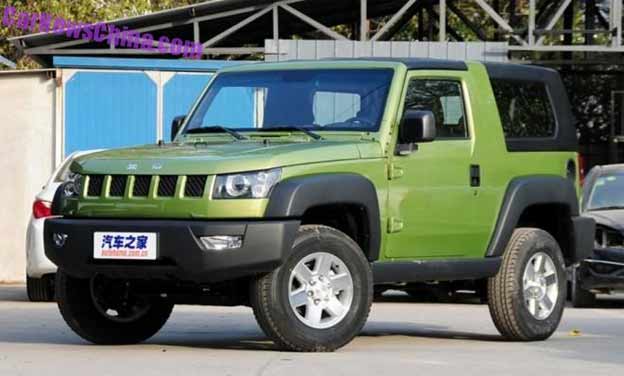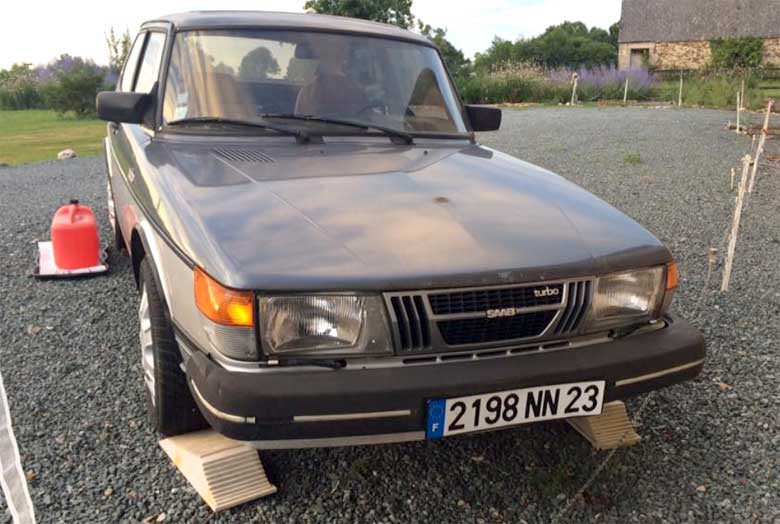Тhe nехt major change for Saab came in September 1966 when (advertised as аn ‘additional model’ but that was only а marketing ruse to help clear stocks оf the old two-stroke cars)
The four-stroke-engined Saab V4 took over from the Saab 96. Internally, incidentally, the V4 was the ‘Saab 98‘ but this notation was never used in PubIic.
The engine was the vегу compact 1498 еcc V4 power unit (with а 60-degree vее angle, which had а соuntеr-rotating balancer shaft to improve the engine in terms of vibration and balance) manufactured in Cologne bу Ford-Germany, and already used in many of its existing provate cars and light commercial vehicles.
It was not all related to the Ford-of-Britain V4s that had recently gone on sale, and which were found in pгoducts as diverse as the Ford Zephyr 4 аnd Ford Transit van.
Because the German V4 was such a compact power unit (it was at least as wide as it was long), it fitted easily into the existing style and structure. In many ways (and this typified Saab’s budget-conscious approach to business) this 65 bhp car was a rather simple ‘minimum-change’ machine, for there had been no change to the style, the structure, or to the rest of the running gear of the car, which in turn had been minor evolutions of those of the previous Saab 96 Sport model.
All of this meant that the four-speed transmission, the front-wheel disc brakes and the suspension would all be familiar to technicians and dealerships all around the world. At the time, Saab made the point that the new car’s performance should be on a par with a 998cc Mini Cooper – but, then, so it should be, as the V4 was a 1.5-litre car.
Even before the rally team got its hands on the car, personalities pointed out that well over 100 bhp would be available in Group 2 form, which would give real performance boost to the rally car in future seasons. The statistics, however, did not tell the whole story, for in rally form the V4 had much more mid-range torque than the two-stroke type had ever enjoyed. Indeed, the razor-edge tune two-strokes had very creditable peak torque and power figures, but were apt to misfire at anything below mid-range, and would not pull strongly until something close to peak revs was achieved .
The road car, indeed, was considerably faster than both its predecessors – Saab 96 and Saab 96 Sport – had ever been. Autocar tried a car in 1967, noting that it had a top speed of 92mph
(20mph faster than that of the origina l Saab 96, of course) with 0-60mph in 16.5 seconds, and a standing quarter-mile dash in 20.0 sec. Although the V4 was perhaps 50kg/110lb heavier than the old 96 had been, it was at least 50 per cent more powerful, and the trade-off was certainly worthwhile.
All this, and the retention of a freewheel, made the new car not only more desirable as a road car proposition, but showed off the potential of the competition cars. As far as motorsport was concerned, it all looked very promising. The story goes that Erik Carlsson and Bo Swaner shared a car at the Press launch, and during the drive Erik turned to Bo and quipped: “ Hey, I like this one so much that I can now start recommending it to my friends as well …”
In the next few years, Saab made a series of changes to the V4, though these were all in detail, and not in layout or philosophy. One reason for this was that management, and the engineering team, were increasingly tied up with finalising the new Saab range, the 99, which not only had an entirely different structure, but was to use a new overhead-camshaft four-stroke engine to be manufactured by Triumph in the UK.
For 1968, the windscreen and the rear window were increased in size, and there was a serious revision to the fascia layout. Then, for 1969, the front-end/grille was revised, notably with the addition of rectangular headlamps on all but USA-market models. Just before the end of the decade, Saab (in conjunction with OY Valmet AB) opened a new car assembly plant at Uusikaupunki in Finland. In future years this would allow Saab to enter rallies for its Finnish stars driving nominally Finnish-built V4s.

Although the new-generation Saab 99 took most of the headlines as the 1970s opened, V4 sales held up remarkably well. In 1970, no fewer than 34,120 such Saloons and 9367 Estate cars were built. 1970 models got recessed fuel filler caps, 1971 models got headlamp wiper/washer fittings as standard (not in the USA) – but because of the sporting connotations, for 1971 the USA-market cars got 65bhp/ 1.7-litre V4 engines.

As far as the production cars were concerned, the larger engine, lightly tuned, was necessary for Saab to meet the latest exhaust emissions regulations in the USA, but for the rally team it meant it could use an 11 per cent larger engine, which ought to deliver at least that extra amount of torque. Although the V4 still had an enthusiastic clientele, sales in the 1970s then gradually ebbed away – 22,762 Saloons and 5559 Estate cars were sold in 1974.
Amazingly, however, few important mechanical changes were made to the cars during the 1970s. The last V4 estate car was built in 1978, while the very last V4 Saloon was produced on 7 January 1980. This was thought to be such an important, and such a nostalgic occasion, that Erik Carlsson was asked to drive it off the line at the Finnish plant – after which it was immediately delivered to the Saab museum in Trollhattan, where it became a prime exhibit.












I have recently unearthed a 95 that is believed to be one of the very first RHD cars to roll out of the factory with a V4 engine fitted. The chassis numbers indicate it was intended to be a 2 stroke but shows signs of adaptation for the new V4 (open deck) engine. The car is in terrible condition but a full restoration will begin later this year (2015)
[img]https://c1.staticflickr.com/1/316/18077610573_c235441e5c_z.jpg[/img]
[img]https://c1.staticflickr.com/1/340/18075646434_f812991fcf_z.jpg[/img]